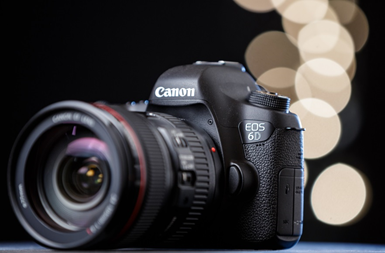To the uninitiated, photography can be incredibly confusing. Not only do you have to learn all the terminology involved with the practice of photography itself, but there is also a wealth of information one must be familiar with when it comes to cameras.
It doesn’t really help that certain brands have specific terms unique to their camera models, compounding what you need to know.
Take the Canon EOS line of cameras as a prime example. A digital camera with decades of history, multiple models, and several unique features, knowing what makes the EOS line special can’t really be determined at first glance.
Don’t worry, because many have been there before and many more will come after you. But to get a better handle on the Canon EOS line, and what makes it different from other cameras, read through the brief guide on EOS-terminology below.
The EOS Basics
First released in 1987, the Canon EOS (electro-optical system) line is an autofocus single-lens reflex camera, otherwise known as an SLR camera. Since, the EOS line has been, for the most part, digitized, effectively making it a Digital SLR camera, or simply DSLR.
Why “EOS”?
Other than being short for electro-optical system (a fancy term used for photonics), the EOS acronym is also an ode to Greek mythology. Eos was the Titan goddess of the dawn, which ties into the camera’s internal system that allows it to interact with light. This also makes both “Eos” and “E-O-S” correct when naming the camera series.
The EF Lens Mount
A revolutionary feature when the EOS camera system first launched, the EF (electro auto-focus) lens mount is different from past models in the fact that there is no physical link between the lens and camera; all communication between the two is done via electrical signals. Basically, there are no motors or levers in the lens, with focus and aperture adjusted electronically.
The ECF Function
An acronym standing for “eye-controlled focusing,” with the ECF function, an EOS camera can track a user’s eyeball movements through the viewfinder, thus allowing it to autofocus with incredible ease. This feature is especially useful in fast-paced photographic environments.
The Quick Control Dial
Abbreviated simply as the “QCD,” the quick control dial was first introduced to Canon’s consumer camera in 2015. The QCD is basically just a large dial on the camera that allows one to easily switch between camera functions and parameters, rather than manually going through menus and pressing various buttons.
The Multi-Point Autofocus System
A high number of autofocus (AF) points truly make your life easier when capturing images of fast moving subjects, as the camera is able to automatically adjust as the subject moves through the frame. It also helps to reduce focusing inaccuracy. Canon EOS camera are among the best on the market when it comes to this digital photography feature, with certain models having up to 65 selectable AF points.



Decoding Digital Cameras: The Canon EOS